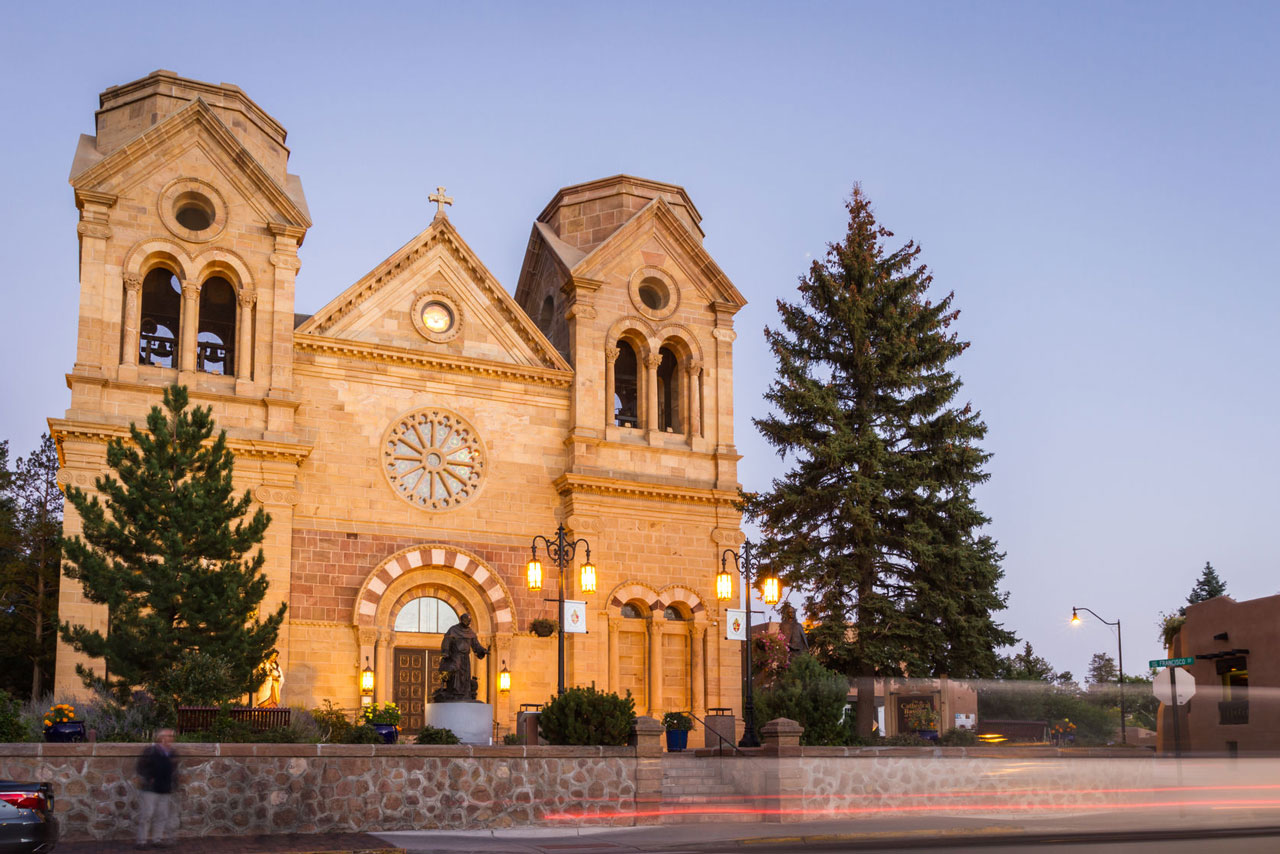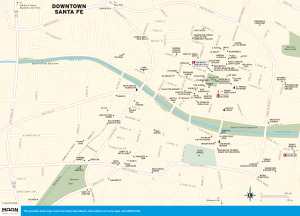
The Cathedral Basilica of St. Francis of Assisi in Santa Fe. Photo © Charles Wollertz/123rf.

Downtown Santa Fe
Santa Fe’s showpiece Cathedral Basilica of St. Francis of Assisi (131 Cathedral Pl., 505/982-5619, 7am-6pm daily, free), visible from the plaza at the end of East San Francisco Street, was built over some 15 years in the late 19th century. It was Jean-Baptiste Lamy’s folly. The French priest had been assigned by the church to a newly created post that would formally separate New Mexico’s Catholics from those in Mexico, but when he arrived in 1851 full of fire and zeal to uplift the barbarous population, he promptly alienated much of his would-be flock.Lamy was shocked by the locals’ religious practices, as the cult of the Virgin of Guadalupe was already well established, and the Penitente brotherhood was performing public self-flagellation. He also disliked their aesthetics. How could a person possibly reach heaven while praying on a dirt floor inside a building made of mud? Lamy took one look at the tiny adobe church dedicated to St. Francis of Assisi, which had stood for 170 years, and decided he could do better. Construction on his Romanesque revival St. Francis Cathedral eventually began in 1869, under the direction of architects and craftsmen from Europe—they used the old church as a frame for the new stone structure, then demolished all of the adobe, save for a small side chapel. Lamy ran short of cash, however—hence the stumpy aspect of the cathedral’s facade, which should be topped with spires.
Inside is all Gothic-inspired light and space and glowing stained-glass windows, but the salvaged adobe chapel remains off to the left of the altar. It is dedicated to the figure of La Conquistadora, a statue brought to Santa Fe from Mexico in 1625, carried away by the retreating Spanish during the Pueblo Revolt, then proudly reinstated in 1693 and honored ever since. She glows in her purple robes, under a heavy viga ceiling—all of which probably makes Lamy shudder in his crypt in front of the main altar (he died in 1888).
On your way out, check the great cast-bronze doors—they’re usually propped open, so you’ll have to peer behind to see the images depicting the history of Catholicism in New Mexico. One plaque shows the Italian stoneworkers constructing the cathedral, and another shows families fleeing from attack in 1680—perhaps the only depiction of the Pueblo Revolt statewide that’s sympathetic to the Spanish.
Excerpted from the Ninth Edition of Moon New Mexico.